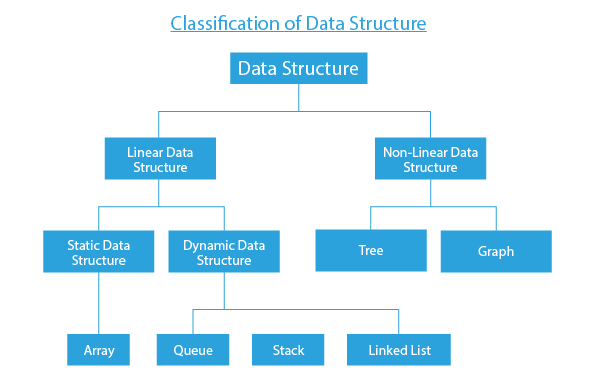Data structures are used as means of organizing and storing data. It is a method of setting up data on a computer to make it easily accessible and up to date.
Since data structures are fundamental to all programming languages, the performance and functionality of programmes are significantly impacted by the data structures in Java.
The Need for Data Structures
As applications get more sophisticated and data volumes increase, the following issues might arise:
- Processing Speed: High-speed processing is needed to manage the enormous quantity of data that is being generated every day, but the processor might not be able to handle it.
- Data Searching: If an application needs to search for a particular item within an inventory with a size of 200 items, it needs to traverse all the items in each search. This leads to a lag in the search time.
- Multiple requests at the same time: When millions of users are searching for data on the web, there is a chance of server failure.
These issues are solved by data structures in Java. It is used to store and manage the data in such a way that the required data can be searched instantly.
Types of Data Structures
There are two types of data structures:
- Primitive data structure
- Non-primitive data structure
Primitive Data structure
Primitive data types correspond to primitive data structures. The primitive data structures that may store a single value are int, char, float, double, and pointer.
Non-Primitive Data structure
The non-primitive data structures are further classified into:
- Linear data structure
- Non-linear data structure
Linear Data Structure
A linear data structure is the clustering of data in sequential order. Data structures, including queues, stacks, linked lists, and arrays, are classified as linear data structures in Java. Each element in this data structure is linearly linked to only one other element.
Non-Linear Data Structure
When one element in a data structure is connected to ‘n’ number of elements, it is known as a non-linear data structure. In this case, the elements in the data structure are arranged in a random manner. The best example of non-linear data structure is trees and graphs.
Data structures can also be classified as:
Static: Data structures classified as static have their sizes allocated at the time of compilation.
Dynamic: Dynamic data structures are a particular kind of data structure where the size is determined during runtime. The maximum size is thus flexible.
Operation Of Data Structures
- Searching: We can search for an element in a data group.
- Sorting: Sort for an element in a data group in a particular order.
- Insertion: Insert a new element in a data structure.
- Updation: Replace an element with another.
- Deletion: We can also perform the delete operation to remove the element from the data structure.
Types Of Data Structures In Java
Following are some popular Java Data Structure types:
- Array
- Linked List
- Stack
- Queue
- Binary Tree
- Binary Search Tree
- Heap
- Hashing
- Graph
Benefits of Data Structures In Java
- Efficiency: By arranging the data in a way that consumes less storage space while processing at a faster rate, data structures in Java are utilised to improve the efficiency and performance of an application.
- Reusability: Data structures allow for the reuse of data, meaning that after constructing a certain data structure just once, we may use it repeatedly at other locations. The implementation of these data structures may be turned into libraries, which clients can utilise in a variety of ways.
- Abstraction: In Java, the Abstract Data Types are used to specify a data structure. The client uses the data structure with the help of the interface only, without having knowledge of the implementation details.
You may also like – Zara Techs



